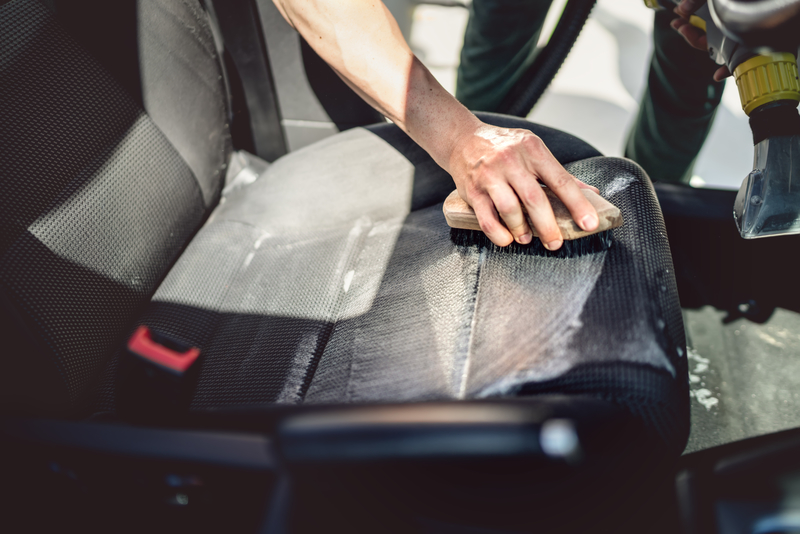Interior Detailing Helps Maintain Vehicle Value

Have you ever admired a car from a distance, only to find a soiled and disheveled interior upon closer inspection?
Basic cleaning is easy to overlook. Yet, regular maintenance makes for a healthy cabin and can improve the value your vehicle.
So says Jim Dvorak of Mothers, a polish and wax company based in Southern California.
“Vacuuming routinely is one of the best things you can do for your interior,” Dvorak said. "Commonly, carpet mats get dirty from your feet dragging in soil and grit that's stuck to soles of your shoes. That collects over time and you'll see a lot of wear as a result.”
Skipping out on regular vacuuming or treating stains can create an unsanitary environment in which allergens and bacteria thrive. Fortunately, some solutions are as simple as keeping a bottle of spot treatment in the vehicle or knocking the dust off the floor mats.
Special precautions must also be taken to care for leather interiors. If sand or abrasive materials get into the stitching of the seats they can rapidly and permanently degrade the finish, Dvorak said.
For more advanced repairs such as rips or deep stains, Dvorak suggested visiting a professional upholstery shop. Routine care also helps prevent the need for expensive repairs or replacements, he added.
Here are Dvorak's basic tips for improving the health and life your vehicle’s interior:
- Vacuum frequently. Regular vacuuming helps remove odors and allergy-causing particles that accumulate in porous materials. Also, dirt and grime contribute to wear; they act like sandpaper against soft surfaces.
- Use deodorizing sprays. Odors, especially from pets or food, may linger even though the interior looks clean. Sprays help neutralize obnoxious smells. Check labels to make sure they are made for your automobile interior.
- Wipe down vinyl. Clean regularly with a quality vinyl upholstery cleaner and a soft cloth. For stubborn dirt, apply the cleaner with a soft-bristled brush and scrub gently. Do not use harsh chemicals like solvents or bleach—they damage or discolor upholstery. Avoid abrasive cleaning pads because may cause scratches and accelerate wear. Abrasive cleaners also create a porous surface that attracts dirt.
- Clean up spills quickly. They can turn into permanent stains if not treated right away. Use a carpet or upholstery spot cleaner according to the manufacturer's recommendations. Test all cleaners for color-fastness in a hard-to-see spot first before using in a more conspicuous place.
- Use upholstery cleaner and protectant. Dirt and liquids readily embed themselves into the structure of fabrics. Clean upholstery occasionally with quality automotive upholstery cleaner, not harsh industrial solvents or cleaning agents. Do not use metallic brushes to free ground-in dirt.
- Read manufacturer labels carefully before apply cleaners, and test a small amount by applying it to an inconspicuous spot such as underneath a seat.
- Use fabric guard on rugs and seats. Fabric guards help repel water and prevent stains. And they make cleanups easier. Look for products designed for automobile interiors.
- Condition leather monthly or every other month. Use a leather cleaner with a white, all-cotton, terrycloth towel. Apply it in a steady, gentle circular motion. Wait a few minutes and wipe the treated area with a second towel. For particularly soiled upholstery, you may repeat applications as needed. Afterward, use a leather conditioner. It keeps leather supple.